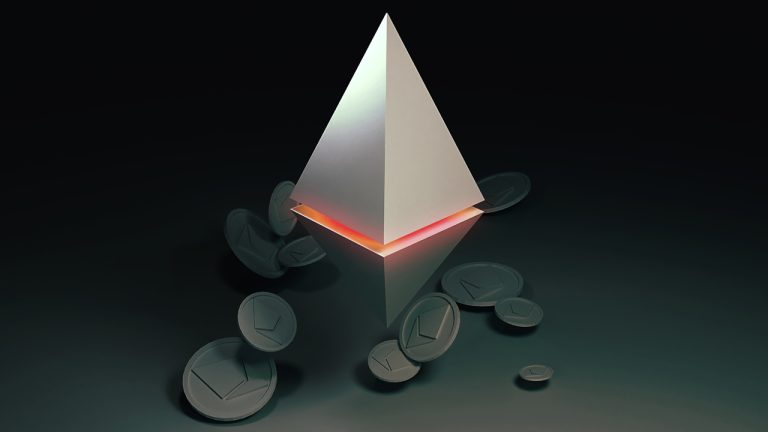 After the transition from proof-of-work (PoW) to proof-of-stake (PoS), Ethereum’s annual issuance rate has been reduced to negative 0.057%, according to statistics 158 days after The Merge. The metrics indicate that more ethereum tokens have been removed than issued, and if the chain were still under PoW consensus, 1,823,678 ether would have been minted to […]
After the transition from proof-of-work (PoW) to proof-of-stake (PoS), Ethereum’s annual issuance rate has been reduced to negative 0.057%, according to statistics 158 days after The Merge. The metrics indicate that more ethereum tokens have been removed than issued, and if the chain were still under PoW consensus, 1,823,678 ether would have been minted to […]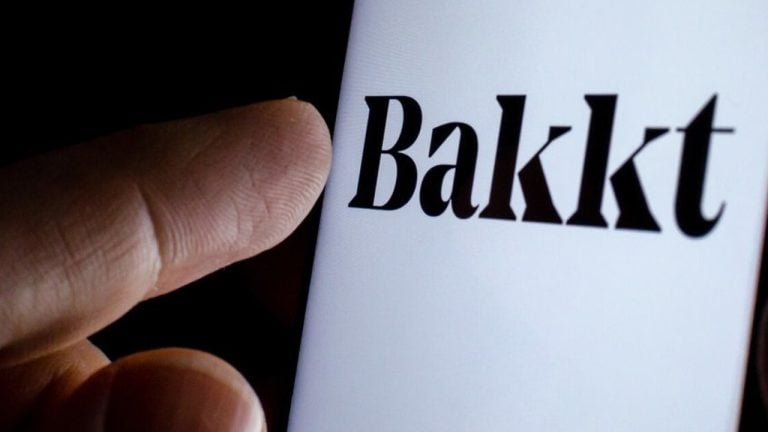 Bakkt Holdings Inc. announced Monday that it will solely focus on business-to-business technology solutions and discontinue its consumer application. The company stated that the app will officially be discontinued on March 16, 2023, and app users will continue to have access to all of their assets. Bakkt Consumer App to Sunset, Loyalty Points Still Accessible […]
Bakkt Holdings Inc. announced Monday that it will solely focus on business-to-business technology solutions and discontinue its consumer application. The company stated that the app will officially be discontinued on March 16, 2023, and app users will continue to have access to all of their assets. Bakkt Consumer App to Sunset, Loyalty Points Still Accessible […] The crypto world was jolted last week when the Securities and Exchange Commission (SEC) shut down Kraken’s staking program, much to the satisfaction of Chairman Gary Gensler and his team. But what does this mean for the future of cryptocurrency and, more specifically, staking? The following opinion editorial was written by Bitcoin.com’s Business Development Manager […]
The crypto world was jolted last week when the Securities and Exchange Commission (SEC) shut down Kraken’s staking program, much to the satisfaction of Chairman Gary Gensler and his team. But what does this mean for the future of cryptocurrency and, more specifically, staking? The following opinion editorial was written by Bitcoin.com’s Business Development Manager […]
A coinbase transaction is the first transaction created in each new block, and it has key features that differentiate it from other transactions.
Coinbase transactions are structured as the first transaction in a block, where the miner includes a newly minted amount of BTC as a reward for their effort in solving a complex mathematical problem to validate transactions and create a new block on the blockchain.
Coinbase transactions have a special format. Compared to a regular transaction input, a coinbase transaction has a different set of values that do not represent unspent transaction output (UTXO).


As such, in place of a transaction hash, a coinbase transaction will have 32 bytes, all set to zero. The output index is also filled with 4 bytes, all set to 0xFF (255 decimal places).
The coinbase transaction’s value is based on factors such as each individual transaction’s value, block height, and halving. Miners can add any customizable text to the blocks they have created.
The value of a coinbase transaction is determined by several factors. These include the value of every transaction validated by the block, the height of the block (number of transactions) and the halving relative to the block. Once the block has reached 100 confirmations, the miner can use the BTC.
When a block is created, it holds approximately 100 bytes of data. There is also an allocation for miners to include any text they prefer. Nakamoto, for instance, wrote the following message when they mined Bitcoin’s genesis block:

This message is a reference to a headline in the British newspaper The Times from Jan. 3, 2009, and is often seen as a commentary on the state of the global financial system at the time of Bitcoin’s creation.
Nakamoto chose to embed this message in the genesis block to emphasize the need for a decentralized and trustless system of transactions, free from the influence of central authorities and intermediaries.
Moreover, miners can add any information they choose to personalize the block, sending an unalterable message in perpetuity.
Coinbase transactions help to prevent forks by including special rules for their creation and validation.
Blockchains like Bitcoin are open-source and rely on communities to maintain and develop their code. As such, an event like a fork will cause the chain to split and produce a second blockchain. This blockchain will contain all of its history while heading off in a new direction.
In such a circumstance, a miner can create as much BTC as they want if the new blockchain does not have the rule of maturity in place, thereby working against Bitcoin’s halving algorithm that seeks to preserve the cryptocurrency’s scarcity.
The coinbase maturity rule governs when the block reward from a coinbase transaction can be spent.
The BTC involved in the coinbase transaction cannot be spent until the block has received at least 100 block confirmations on the blockchain. Unlike regular Bitcoin transactions that contain data showing the movement of BTC from one wallet to another, coinbase transactions contain data concerning the generation of a new currency that has not yet been spent.
For this reason, the input in these transactions remains blank. Structurally, therefore, coinbase transactions can also be thought of as single blank inputs. The maturity rule was put in place to protect the blockchain from forks, which are events that happen when a community decides to implement changes to the blockchain’s protocol or set of rules.
Block rewards are the rewards received by miners for mining new blocks and adding them to the blockchain. The Bitcoin halving reduces the block reward by 50% approximately every four years.
Miners are responsible for creating blocks on proof-of-work (PoW) blockchains like Bitcoin. In return, they are rewarded with BTC after the successful creation of each block. The block reward depends on two things: the number of fees included in the transactions of each block and the number of blocks from the genesis block.
During the early days of Bitcoin, the block reward was 50 BTC per block, and this reward is included in the coinbase transaction. Due to the Bitcoin halving, however, the block reward is reduced by half after every 210,000 blocks mined. Bitcoin’s halving occurs approximately every four years.
The block subsidy that is distributed by the coinbase transaction is 6.25 BTC per block (per the latest halving). And because coinbase transactions create new coins, it is valid without any inputs, as the BTC it contains is newly created and not previously spent.
For example, the Blockstream coinbase transaction in block 650,000 has no inputs, and the single output is the amount of 6.25 BTC in addition to the miner’s 0.244131 BTC of fees collected.
Coinbase transactions have unique features, including maturity, fork prevention and customizable texts. They also have a different structure than other transactions.
On the Bitcoin blockchain, all transactions executed on-chain are combined to form one block. When a block is formed, it will immediately be added to the blockchain. These blocks are immutable and tamper-proof owing to the Bitcoin blockchain’s near-perfect code. Each block should contain one or more transactions, the first of which is always called a coinbase transaction.
Here's how a coinbase transaction works:
A miner can include a coinbase transaction, along with other transactions, in the block they have mined and broadcast that block to the network after creating it. The block is then examined by other miners, and if approved, it is uploaded to the blockchain and paid for by the block reward plus any associated mining fees.
Some key features of coinbase transactions are discussed below.
Not to be confused with the cryptocurrency exchange Coinbase, the term “coinbase transaction” refers to a particular type of transaction that occurs in every new block of a blockchain.
Coinbase transactions are a key part of the system that blockchains utilize to introduce new currencies that have never been sent into circulation. The first coinbase transaction was generated by Bitcoin’s (BTC) pseudonymous creator, Satoshi Nakamoto, while mining the first genesis block. The coinbase was reportedly paid to the Bitcoin address “1A1zP1eP5QGefi2DMPTfTL5SLmv7DivfNa” with a value of 50 BTC.
One of the biggest curiosities of the Bitcoin blockchain is that the said block was never confirmed on the blockchain — something that has puzzled many blockchain scientists and developers.
One theory is that this occurred because the first-ever coinbase transaction was encoded in the genesis block’s source code. And because the entire blockchain is built on this genesis block, the concept of confirmation was not applied to it.
Another theory suggests that Nakamoto designed it this way since, if the genesis block were to get unconfirmed for any reason, it would cause a new blockchain to be built, making the original blockchain obsolete.
The coinbase transaction is also used to reward miners for maintaining the blockchain. They are paid a certain amount of coins for each block they mine. This rewards system creates an incentive for miners and helps keep the blockchain secure by deterring malicious behaviors that could destabilize the network.
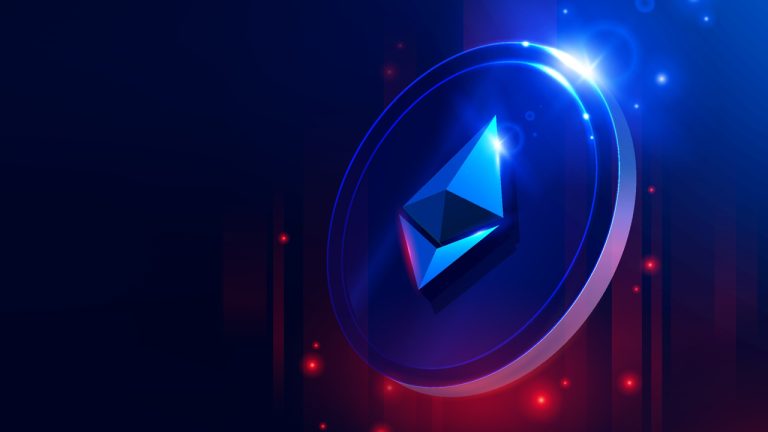 On Friday, the Web3 wallet firm Metamask, a subsidiary of the Ethereum-centric company Consensys, announced the beta launch of ethereum staking features will be made available via Lido’s or Rocketpool’s liquid staking services. Users who want to stake ethereum and earn staking rewards can select one of the staking providers within the Metamask Web3 wallet’s […]
On Friday, the Web3 wallet firm Metamask, a subsidiary of the Ethereum-centric company Consensys, announced the beta launch of ethereum staking features will be made available via Lido’s or Rocketpool’s liquid staking services. Users who want to stake ethereum and earn staking rewards can select one of the staking providers within the Metamask Web3 wallet’s […]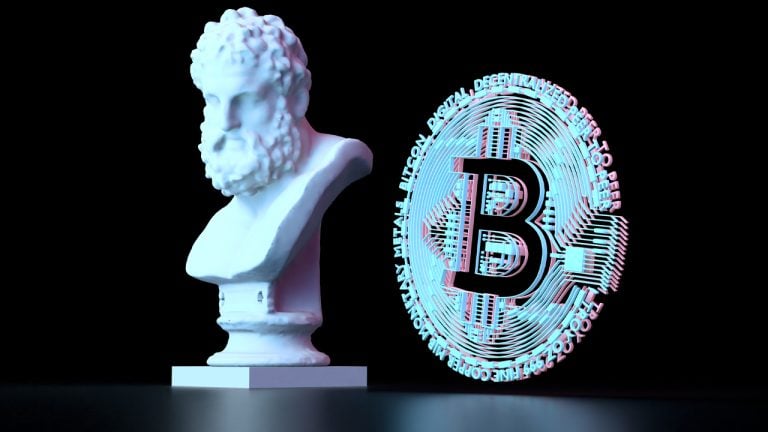 In 2021, a number of 2010 block rewards were spent after the bitcoins sat idle for more than a decade. Furthermore, in 2020 and 2021, an early miner from 2010 spent strings of 20 ancient block rewards. In 2022, however, only 17 block rewards from 2010 were spent. Alongside this, on March 10, 2022, an […]
In 2021, a number of 2010 block rewards were spent after the bitcoins sat idle for more than a decade. Furthermore, in 2020 and 2021, an early miner from 2010 spent strings of 20 ancient block rewards. In 2022, however, only 17 block rewards from 2010 were spent. Alongside this, on March 10, 2022, an […]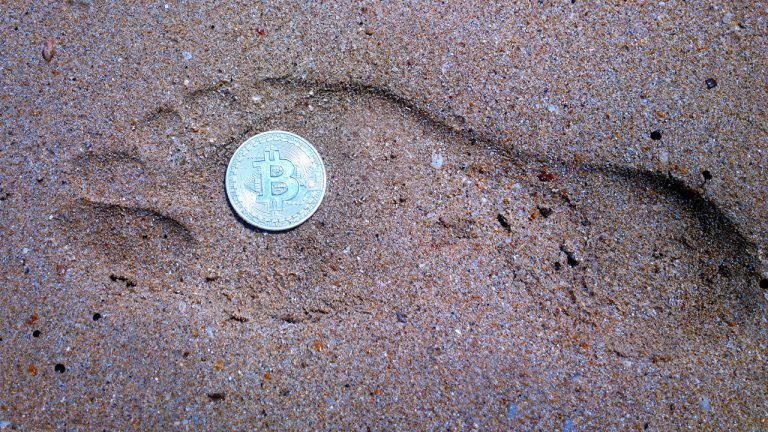 Digital asset manager Bakkt Holdings, Inc., announced on Thursday that the company has acquired the firm Apex Crypto from Apex Fintech Solutions. Bakkt detailed that the acquisition of the turnkey crypto platform aims to “bolster Bakkt’s cryptocurrency product offering and expand its footprint into additional client verticals.” Bakkt to Expand Client Verticals With Different Offerings […]
Digital asset manager Bakkt Holdings, Inc., announced on Thursday that the company has acquired the firm Apex Crypto from Apex Fintech Solutions. Bakkt detailed that the acquisition of the turnkey crypto platform aims to “bolster Bakkt’s cryptocurrency product offering and expand its footprint into additional client verticals.” Bakkt to Expand Client Verticals With Different Offerings […]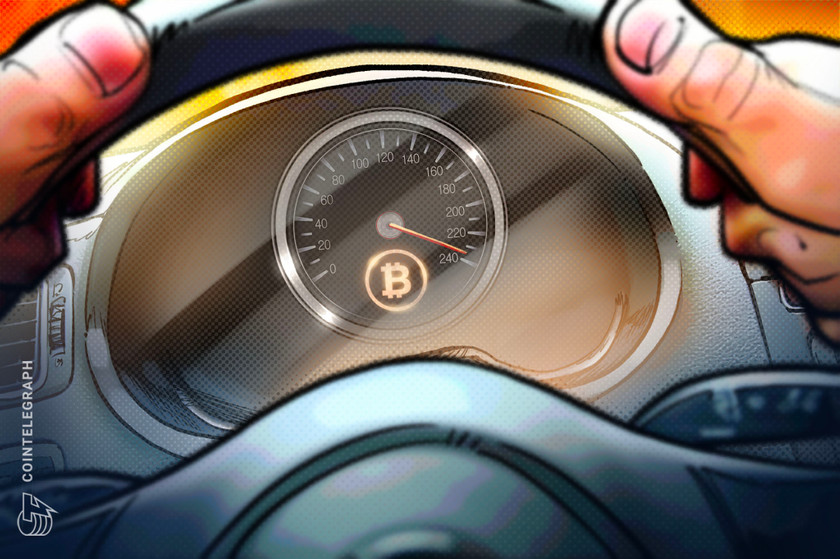
Cryptocurrency’s hash rate measures a blockchain network’s processing power to process transactions.
The main drivers of Bitcoin’s price include computational power, mining profitability and network difficulty. Since miners are compensated in Bitcoin while incurring costs in local currencies, the hash rate follows the price.
That said, the more computational power the Bitcoin network employs, the higher its value is. Moreover, rational miners are only willing to mine BTC if it is profitable, which implicitly means that any other cryptocurrency with no demand for it would have zero value and miners would redirect its resources elsewhere.
Additionally, the network difficulty can be used as a stand-in for total mining power. This premise is explicitly backed by the algorithm governing the Bitcoin network, meaning that difficulty readjusts to make up for declining or in the opposite scenario, mitigate the impact of growing mining power.
Fluctuations in the price of Bitcoin are significant not only for purely speculative reasons but also for how it affects the energy consumption of the Bitcoin network and how miners that power the Bitcoin infrastructure will behave in the future. In addition, there has long been a belief that the hash rate, or the total number of computations performed by Bitcoin miners, and the price of BTC are related.
Nonetheless, this notion might seem incorrect as a manufacturer’s level of effort in producing a good or service has no bearing on the price consumers pay since producers are price-takers in competitive marketplaces. On the contrary, this might not be true for the Bitcoin market, though, because there are only a few mining pool operators to coordinate their operations to control the market price. Furthermore, the inelastic nature of the Bitcoin supply and the intense competition in the mining industry might drive miners to act differently.
Purchase a licence for this article. Powered by SharpShark.
The SHA-256 cryptographic hashing function, which converts any input data into a 256-bit string (the hash), is one of the technologies using which Bitcoin measures its hash rate. Due to the one-way nature of this function, it is simple to determine the hash from an input but not the other way around.
A hash rate, which can be expressed in billions, trillions, quadrillions and quintillions, is a measurement of how many calculations can be carried out each second. For instance, a hash rate of 1BH/s indicates that one billion estimates can be made each second. But, how is Bitcoin’s hash rate measured? Exahashes per second (EH/s) that are equivalent to one quintillion hashes are used to express the hash rate of BTC. By comparing the average time between mined blocks with the network difficulty at a particular time, the overall network hash rate may be roughly calculated.
So, what is mining difficulty? The mining challenge refers to how tough it is for miners to generate a hash lower than the desired hash, which is accomplished by lowering the hashed block header’s numerical value. On average, a new block (Bitcoin) is found every ten minutes. However, if BTC is discovered less frequently than the average time, the difficulty decreases or vice-versa.
Furthermore, it is essential to note that the Bitcoin network’s mining difficulty is automatically changed after 2,016 blocks have been mined. Therefore, depending on the number of miners and their total hashing power in the mining network, the difficulty can be adjusted either higher or downwards. So, what is Bitcoin’s current hash rate?
Although the precise hashing power of Bitcoin is unknown, it can be inferred from the number of blocks currently being mined and the level of block difficulty. So, how to monitor Bitcoin’s hash rate? Blockhain.com offers estimates about Bitcoin’s current hash rate, which is 224.383m TH/s as of September 25, 2022.
A crucial indicator of a blockchain network’s strength, specifically its security, is its hash rate.
So, what happens if Bitcoin’s hash rate increases? The hash rate rises as more machines are devoted by legitimate miners to finding the next block, signifying that the network's total computational power is high and it is difficult for malicious actors to interfere with the network. Nonetheless, the majority hash rate controller could reverse his payments by reorganizing payments, leading to double-spending issues due to a fall in the network’s hash rate.
Now, what happens if Bitcoin’s hash rate decreases? A decrease in hash rate exposes the network to cyber criminals and crypto heists due to the low cost of executing a 51% attack. In addition, a lower hash rate makes cryptocurrency less decentralized, posing a considerable risk to crypto investors. To safeguard its users against losing funds, crypto platforms could stop trading or delist a currency if the hash rate suddenly drops. So, Is a high hash rate a good measure of a network’s security?
Similar to the majority of PoW crypto, a more significant hash rate is thought to be better for the overall security and stability of the blockchain network as it means more energy costs, more miners and more time is needed to take over the network.
The amount of processing and computing power being given to the network through mining is referred to as Bitcoin’s hash rate. A fixed-length alphanumeric code representing any length of words, messages, or data is called a “hash.”
Blockchain technology is the foundation of Bitcoin (BTC) and many other cryptocurrencies. The Bitcoin network is formed by blocks that form a chain dependent on one another. Blocks are akin to files containing information about the most recent transactions made throughout the network.
Smaller blocks require fewer processing resources to validate (or vice-versa) since they behave like data files. Hashing comes into play in this situation. Confirming the integrity of the network transactions is known as “hashing” a block and BTC is given to network or hashing participants as a reward. So, what does hash rate mean for miners and crypto investors?
Calculating a hash rate might assist individual miners in forecasting their profitability. However, as cryptocurrencies are mined with various types of mining equipment, the hash rate of each machine differs. Since varying levels of processing speed, memory and power are needed for mining, the network hash rate increases when mining equipment is upgraded or vice-versa.
Because the network is designed to release a specific quantity of Bitcoin at a time, however, a more robust network does not necessarily lead to BTC being mined more quickly.
The number of miners in the network, mining difficulty and, ultimately, miner profitability are all impacted by changes in hashing power. In addition, the mining challenge rises when more miners join the network because it takes more guesses per second to solve the complex mathematical equation and get the block reward. As a result, the hash rate rises as the difficulty of the Bitcoin network does. Similarly, the hash rate is a crucial indicator for cryptocurrency investors of how secure a cryptocurrency’s proof-of-work (PoW) network may be against hackers. That said, network attacks become more expensive and challenging as the hash rate increases.

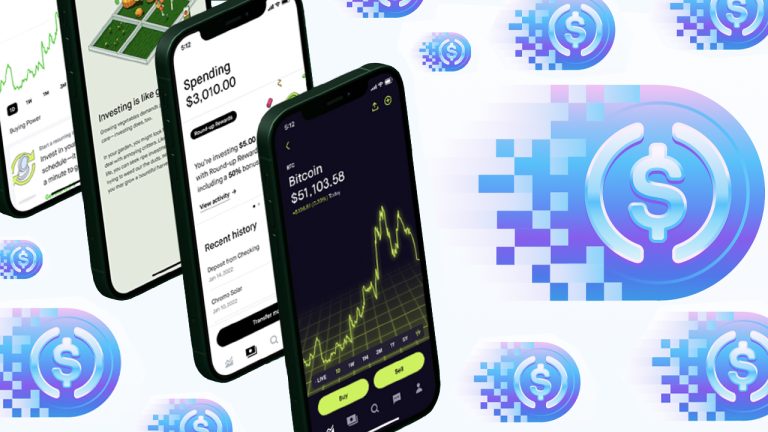 After Robinhood Markets launched the company’s beta Web3 wallet on Tuesday and listed the stablecoin usd coin on the exchange platform Robinhood Crypto last week, the company announced a strategic partnership with Circle Financial. The deal revealed on Wednesday will provide Robinhood Crypto and Robinhood Wallet users with the ability to purchase and sell usd […]
After Robinhood Markets launched the company’s beta Web3 wallet on Tuesday and listed the stablecoin usd coin on the exchange platform Robinhood Crypto last week, the company announced a strategic partnership with Circle Financial. The deal revealed on Wednesday will provide Robinhood Crypto and Robinhood Wallet users with the ability to purchase and sell usd […]
The bill amendment demands the Secretary of State submit reports to congressional committees explaining why the DOS made the determination to pay out rewards in cryptocurrency.
A new bill demanding a congressional notification prior to payments of the United States Department of State (DOS) rewards using cryptocurrencies surfaced as the U.S. Congress raised concerns about the evasion of sanctions.
The Rewards for Justice Program, a counterterrorism rewards program run by the Secretary of State, offers rewards for information that prevents international terrorism. Citing examples of Russia and Belarus as previously sanctioned regimes that have used cryptocurrencies to circumvent sanctions, the bill H. R. 7338 demands that:
“The Secretary of State shall notify the appropriate congressional committees not later than 15 days before paying out a reward in cryptocurrency.”
Congress highlighted the United Nations’ findings that 12 million Ukrainian residents would need humanitarian assistance and that cryptocurrencies have “been used as an effective cross-border payment tool to send millions to the Ukrainian Government, Ukrainian army, and Ukrainian refugees with limited access to financial services.”
The bill amendment demands the Secretary of State submit reports to congressional committees explaining why the DOS made the decision to pay out rewards in cryptocurrency.
If signed into law, the bill will require the DOS to list each crypto payments that were previously provided. Moreover, the federal department will also need to provide evidence as to why cryptocurrency payments would encourage whistleblowers to share intel when compared to rewarding with the US dollar or other prizes.
In doing so, the DOS must showcase an analysis of how crypto rewards could undermine the dollar’s dominance as the global reserve currency.
Related: White House OSTP department analyzes 18 CBDC design choices for the US
Following US president Joe Biden’s executive order on Ensuring Responsible Development of Digital Assets, federal agencies joined hands in publishing a fact sheet to articulate a clear framework for responsible digital asset development.
The “first-ever” fact sheet published by the White House consisted of seven sections, namely (1) Protecting Consumers, Investors, and Businesses; (2) Promoting Access to Safe, Affordable Financial Services; (3) Fostering Financial Stability; (4) Advancing Responsible Innovation; (5) Reinforcing Our Global Financial Leadership and Competitiveness; (6) Fighting Illicit Finance and (7) Exploring a U.S. Central Bank Digital Currency (CBDC).
While some of the sections don’t contain any particularly new information, federal agencies recommend the creation of a federal framework for nonbank payment providers in addition to encouraging the adoption of instant payment systems like FedNow, which is expected to launch in 2023.